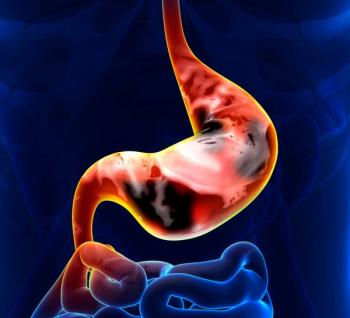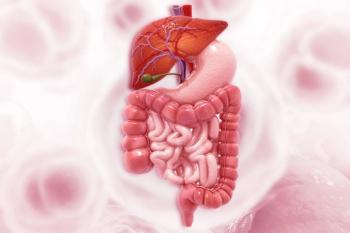
Blood-Based Biomarker Combo Flagged High-Risk Colorectal Cancer
A combination of four biomarkers may be able to help clinicians identify patients who have a high-risk type of colorectal cancer.
A combination of four biomarkers may be able to help clinicians identify patients who have a high-risk type of colorectal cancer, according to the results of a study presented at the 2016 American Society of Clinical Oncology (ASCO) Gastrointestinal Cancers Symposium, held January 21–23 in San Francisco (
“We can conclude that a panel of blood-based biomarkers can significantly predict the probabilities of the endpoints that we’re looking at-that is, colorectal cancer and others,” said Ib J. Christensen, MSc, of the Danish Study Group on Early Detection of Colorectal Cancer, during his presentation.
To screen for these biomarkers, Christensen and colleagues collected data from 4,698 patients who underwent first-time colonoscopy for symptoms that were suspicious for colorectal neoplasia.
They screened patients for a series of markers that have been shown to be associated with colorectal cancer: carcinoembryonic antigen (CEA), cytokeratin fragment 21-1 (CYFRA 21-1), cancer antigen 19-9 (CA19-9), alpha-fetoprotein (AFP), high sensitivity-CRP, Ferritin, Galectin-3, and inhibitor of metalloproteinase-1 (TIMP-1). These biomarkers were measured using the Abbott ARCHITECT i2000 automated immunoassay platform. The researchers evaluated these biomarkers for three clinical endpoints: colorectal cancer, colorectal cancer and high-risk adenoma, and colorectal cancer and other cancers.
After evaluation, 512 colorectal cancers were identified (319 colon cancers and 193 rectal cancers); 515 adenomas of the colon, 174 adenomas of the rectum, and 177 other cancers were also found.
A univariable analysis showed that all of the chosen biomarkers were statistically significant for each endpoint. Multivariable analysis showed an area under the receiver operating characteristic curve (AUC) for the eight biomarkers of 0.837 to detect colorectal cancer, 0.755 to detect colorectal cancer plus high-risk adenomas, and 0.825 to detect colorectal cancer and other cancers.
The researchers wanted to reduce this panel to include only four markers, so they conducted a model reduction to identify the four markers with the highest likelihood of detection, including age and gender. The four biomarkers with the strongest association with colorectal cancer or high-risk adenomas were CEA, high-sensitivity CRP, Ferritin, and CYFRA 21-1. Therefore, the final model included these biomarkers plus age and gender.
Using this reduced model, the colorectal cancer endpoint had an AUC of 0.81 (compared with 0.84 for the full model), and the colorectal cancer plus high-risk adenomas endpoint had an AUC of 0.71 (compared with 0.76 for the full model). These data showed that “the reduced model does perform reasonably well compared with the full model,” Christensen said.
According to Christensen, the final model with a sensitivity of 90% would have a specificity of 33%, a positive predictive value of 25%, and a negative predictive value of 93% for identifying people with colorectal cancer or a high-risk adenoma.
Based on these results alone, Christensen said that this model is not yet ready for the clinic. In the future, he and his colleagues plan to investigate new markers, including coagulation, metabolic, and epigenetic markers.
Newsletter
Stay up to date on recent advances in the multidisciplinary approach to cancer.

















































































